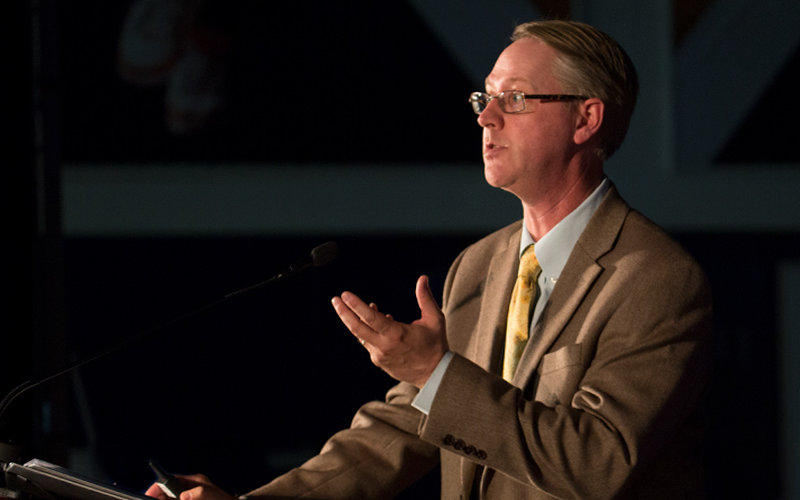
Educator Mark Ellis is a former middle school and high school math teacher driven by a belief that every young student has the potential to be successful in learning mathematics.
To help teachers maximize student success with math, the Cal State Fullerton professor of secondary education has co-authored “Reimagining the Mathematics Classroom: Creating and Sustaining Productive Learning Environments, K-6.” The book is a new approach to examining elementary mathematics teaching — and challenges narrow conceptions of mathematics instruction and learning.
Ellis has garnered several grant awards for his projects involving innovative approaches to teacher preparation and teacher development. He served on the National Council of Teachers of Mathematics Board of Directors, and in 2015, received the organization’s Linking Research and Practice Outstanding Publication Award for the article “Multidimensional Mathematics Teaching.”
What is the subject of your book?
The book provides elementary school teachers of mathematics with research-based ideas and examples for reimagining what it looks and feels like to teach and learn mathematics in the 21st century. For most teachers, myself included, K-6 grade mathematics emphasized following procedures to get answers without much concern for how or why these strategies worked, were related or could be adapted to new problems. Current standards for mathematics education emphasize reasoning, sensemaking, justification and flexibility with applying ideas in new contexts. The book also offers teachers ideas on how to set up powerful learning environments, with examples of classrooms of 23 math teachers from Southern California.
Why are you interested in this topic?
I began my career as a mathematics teacher with the purpose of creating classrooms in which all students could experience success with math, a subject that in the U.S. has been used — intentionally or not — as a vehicle for separating students in ways that mirror social inequities. The methods I used in the 1990s, which led to significant improvement in my students’ outcomes in mathematics, are becoming more widely adopted today. These include giving students opportunities to productively struggle with an unfamiliar task designed to extend and/or challenge their prior knowledge, requiring students to communicate with peers about their mathematical reasoning, and using students’ mathematical ideas as the basis for calling attention to key mathematical relationships and properties.
Why is it important to understand math?
In the U.S. we developed an unfortunate 20th-century tradition of teaching mathematics that placed emphasis on memorizing facts and rules with minimal attention to reasoning and sensemaking. What students need to learn in the 21st century is to understand mathematical concepts, relationships and processes so they can both understand the meaning of solutions generated by computers that are literally all around us, and also have the ability to solve nonroutine problems in creative ways — something computers are unable to do.
What is one surprising fact about math?
Math makes sense and is accessible to everyone! The notion — common in the U.S. — that some people are good at math, while many are not, is nonsense. When I was a middle school teacher, I saw time and again students go from struggling to success when they realized that math was supposed to make sense and were given opportunities to engage in intentionally designed sensemaking activities with peers. If you work with learners of math, ask them to share their thinking and encourage them to use multiple means to represent their ideas. We must get away from the idea that ‘fast is better’ and realize that mathematics is about processes and logical reasoning.
The book’s co-authors are Cathery Yeh of Chapman University and Carolee Koehn Hurtado of UCLA. To view a webinar about the book, visit this link. To learn more about Ellis, visit online.